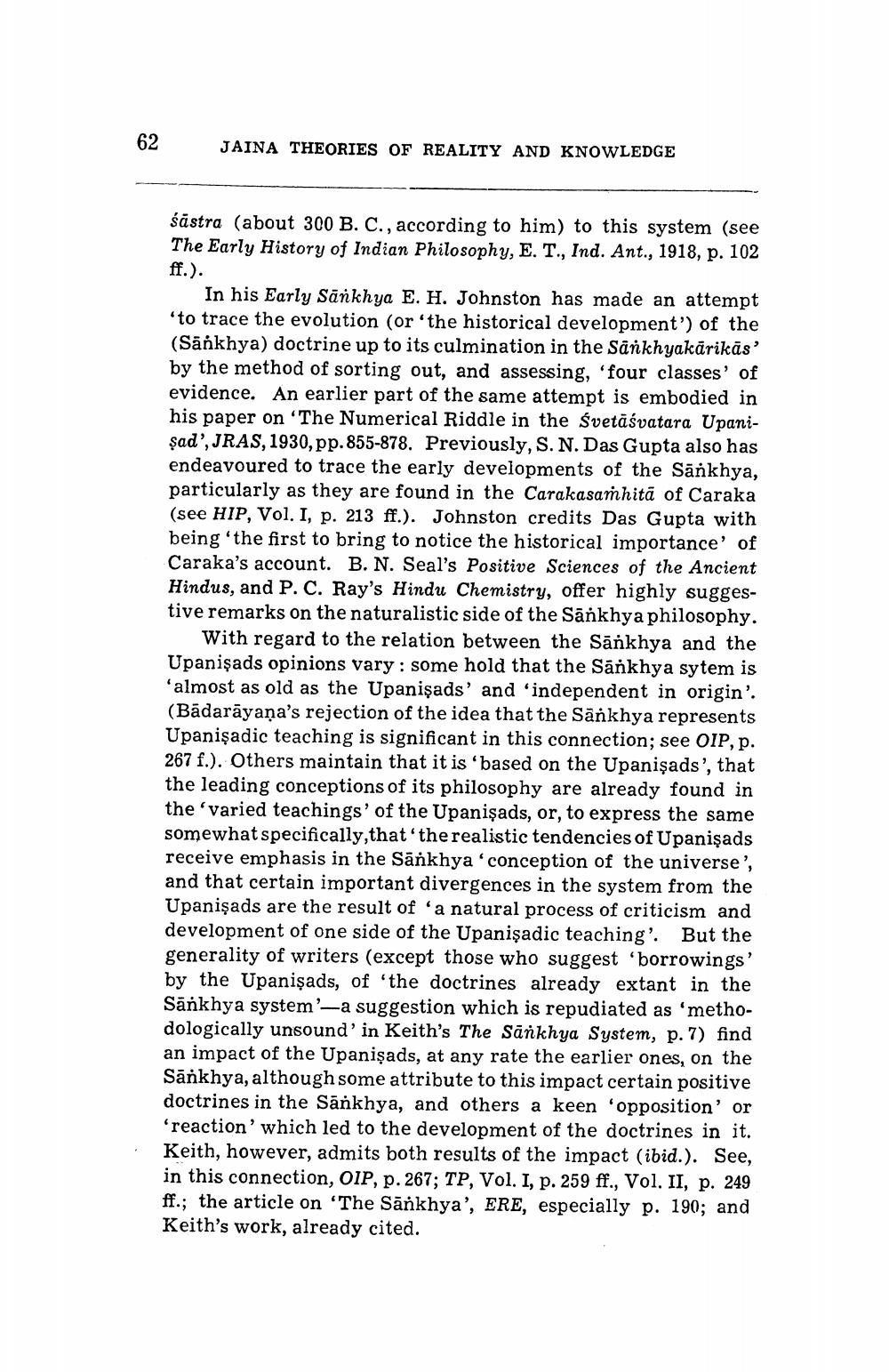________________
62
JAINA THEORIES OF REALITY AND KNOWLEDGE
śästra (about 300 B. C., according to him) to this system (see The Early History of Indian Philosophy, E. T., Ind. Ant., 1918, p. 102 ff.).
In his Early Sankhya E. H. Johnston has made an attempt 'to trace the evolution (or 'the historical development') of the (Sankhya) doctrine up to its culmination in the Sankhyakärikās' by the method of sorting out, and assessing, 'four classes' of evidence. An earlier part of the same attempt is embodied in his paper on 'The Numerical Riddle in the Svetasvatara Upanisad', JRAS, 1930, pp. 855-878. Previously, S. N. Das Gupta also has endeavoured to trace the early developments of the Sankhya, particularly as they are found in the Carakasamhita of Caraka (see HIP, Vol. I, p. 213 ff.). Johnston credits Das Gupta with being 'the first to bring to notice the historical importance' of Caraka's account. B. N. Seal's Positive Sciences of the Ancient Hindus, and P. C. Ray's Hindu Chemistry, offer highly suggestive remarks on the naturalistic side of the Sankhya philosophy.
With regard to the relation between the Sankhya and the Upanisads opinions vary: some hold that the Sankhya sytem is 'almost as old as the Upanisads' and 'independent in origin'. (Bādarāyaṇa's rejection of the idea that the Sankhya represents Upanisadic teaching is significant in this connection; see OIP, p. 267 f.). Others maintain that it is 'based on the Upanisads', that the leading conceptions of its philosophy are already found in the 'varied teachings' of the Upanisads, or, to express the same somewhat specifically, that 'the realistic tendencies of Upanisads receive emphasis in the Sankhya 'conception of the universe', and that certain important divergences in the system from the Upanisads are the result of a natural process of criticism and development of one side of the Upanisadic teaching'. But the generality of writers (except those who suggest 'borrowings' by the Upanisads, of 'the doctrines already extant in the Sänkhya system'-a suggestion which is repudiated as 'methodologically unsound' in Keith's The Sänkhya System, p. 7) find an impact of the Upanisads, at any rate the earlier ones, on the Sankhya, although some attribute to this impact certain positive doctrines in the Sankhya, and others a keen 'opposition' or 'reaction' which led to the development of the doctrines in it. Keith, however, admits both results of the impact (ibid.). See, in this connection, OIP, p. 267; TP, Vol. I, p. 259 ff., Vol. II, p. 249 ff.; the article on "The Sankhya', ERE, especially p. 190; and Keith's work, already cited.




